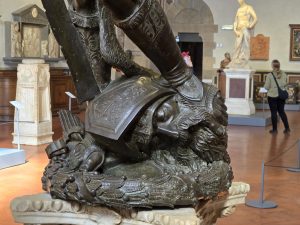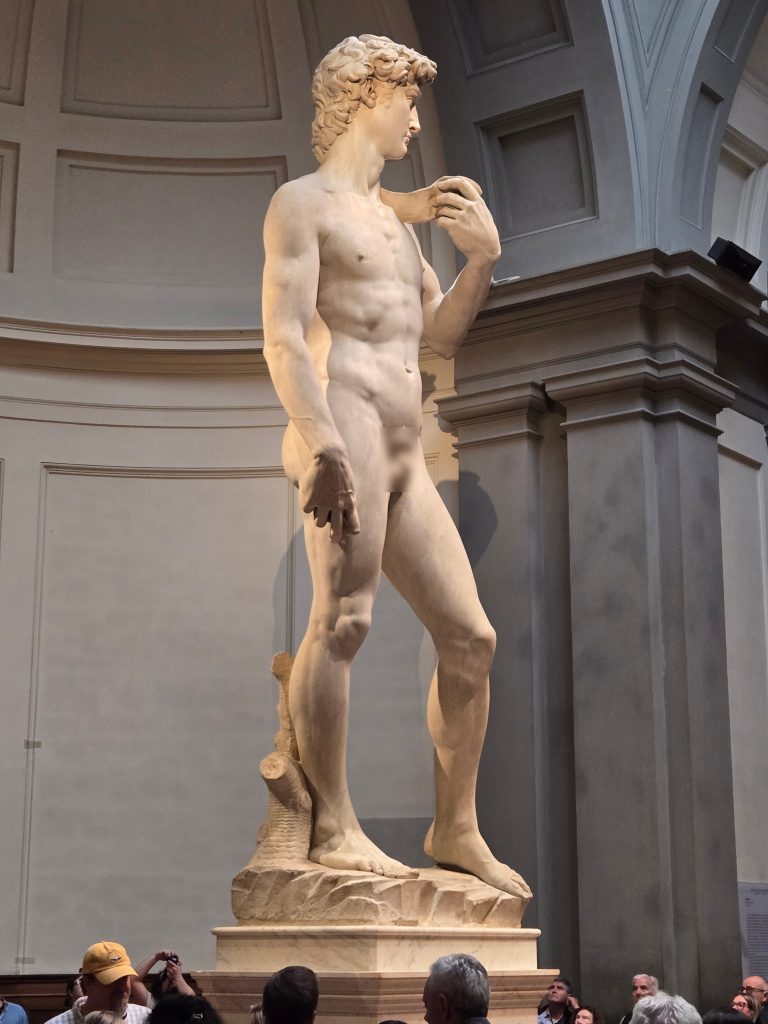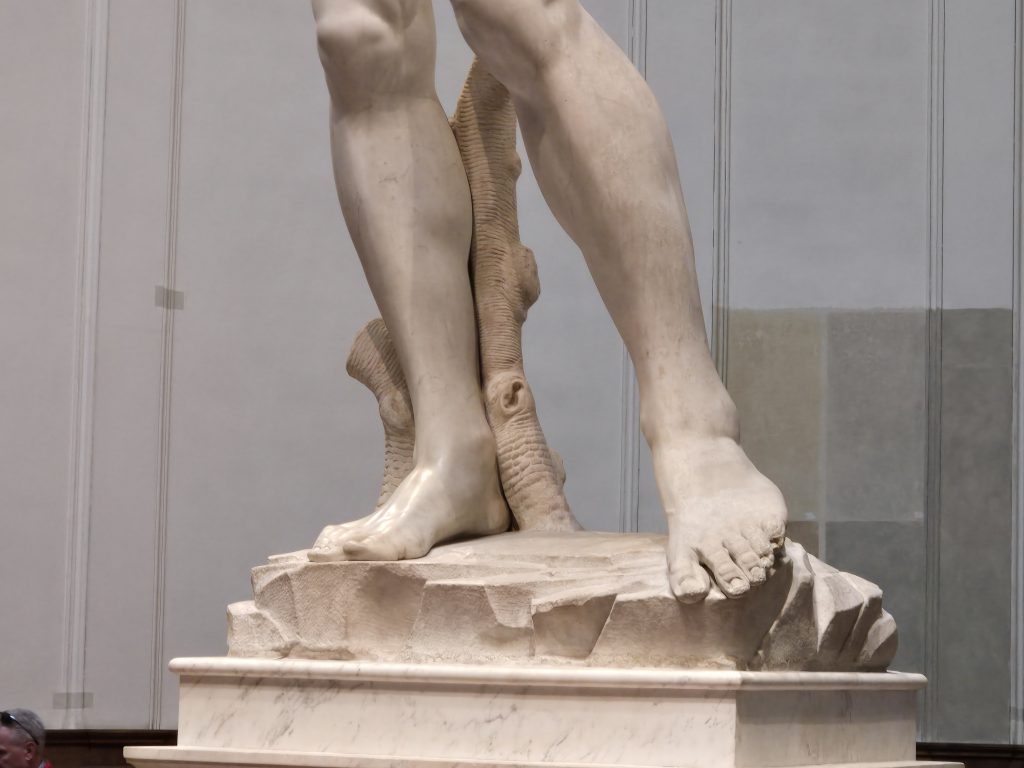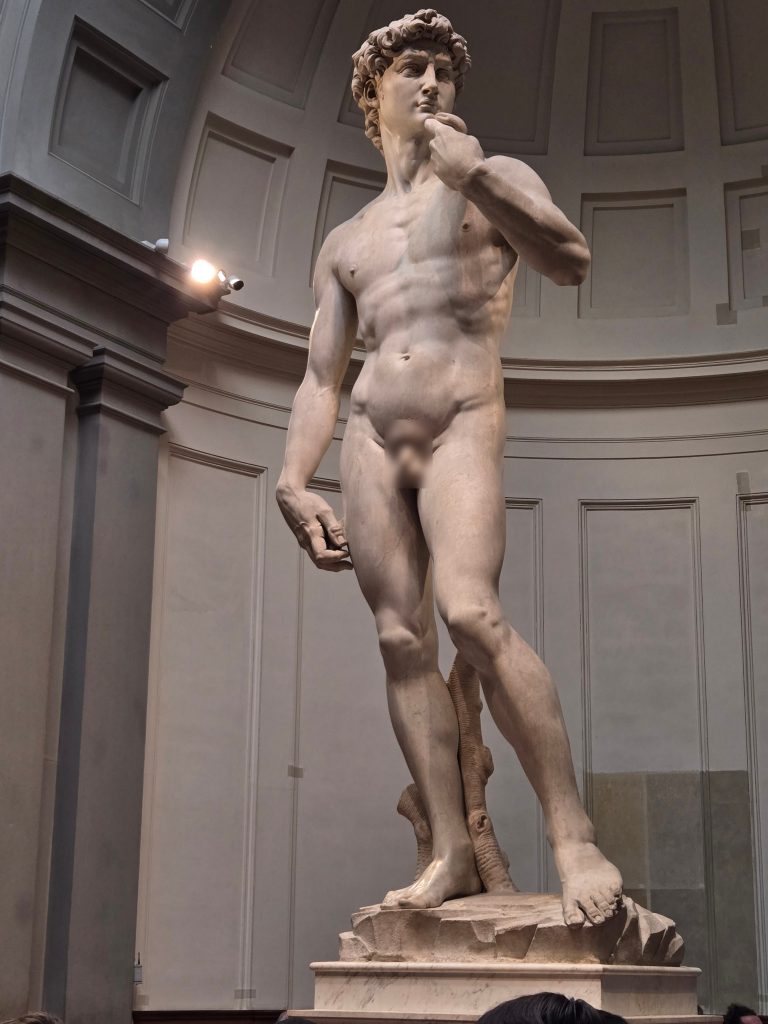The three variants of the ‘David’ statue
My favorite professor from my 2010 sabbatical is still presenting: Dr. Liz Lev. She is an Art Historian who teaches at a Roman University—and has a phenomenal ability to convey subtleties in art in a most captivating way. In 2010 she only brought us through St. Peter’s and the Vatican Museum. And in 2025 she is better than ever!

On Thursday, October 9th, Dr. Lev accompanied my classmates and me on a one-day whirlwind tour of Florence. She herself said it was a travesty to do Florence in a day, but she brought new insights and appreciation to sites I’d seen before, but never appreciated: the various churches, the Brancacci Chapel, and Michelangelo’s David.
We’ve all seen images of Michelangelo’s David—but did you know that Michelangelo’s statue was the third statue to be submitted … after the first two had been flatly rejected? Donatello made his submission in 1460; Andrea del Verrocchio started working on his David in 1475, which was also rejected. Long about 1501 Michelangelo began sculpting his statue of David, and finished it in 1503. I had no idea about any of this.
 Before going to see the David by Michelangelo, Dr. Lev took us to the Bargello Museum to view the two rejected versions of David—and they were right to reject them.
Before going to see the David by Michelangelo, Dr. Lev took us to the Bargello Museum to view the two rejected versions of David—and they were right to reject them.
The first submission presented an adolescent boy (see above right) who doesn’t even have the upper-body strength to lift the sword, standing triumphantly on the head of Goliath. It was rejected as unrealistic and implausible.
The second rejected statue (left) shows a triumphant David, standing on the head of Goliath, with the implied connotation of: “Who’s next? I dare you to try.” Again, this submission was rejected, as it didn’t seem to be an accurate description of the boy who slew Goliath—and became King David.
The statue that we all know and identify as David was overwhelming accepted by the Florentine’s as an accurate and authentic depiction of what they envisioned. And there are key aspects of Michelangelo’s David that I never noticed — but which stand out like ‘red flags’ once it’s brought to your attention; most notably: David’s hands, feet, and neck are woefully out of proportion given the size of the statue. Michelangelo’s message: David is an awkward youth who, on his own, is ill-equipped for a battle Goliath … but God will provide him with the strength he needs. King David’s will be a life-long process of growing in his ability to put unconditional trust in the Lord.
An image that comes to mind as I look at the statue of Michelangelo’s David is that of a St. Bernard puppy; his paws are way too big for his body, and thus the puppy walks a bit clumsily. But as the pup grows, the rest of his body assumes a correct proportion to his paws.
The awkwardness of young David and his journey of faith is symbolic of our spiritual journey; we’re still growing, and can feel clumsy & awkward at times. That’s okay as long as, like King David, we admit to our growing pains (e.g. sinfulness), and always remain rooted in the Lord.



